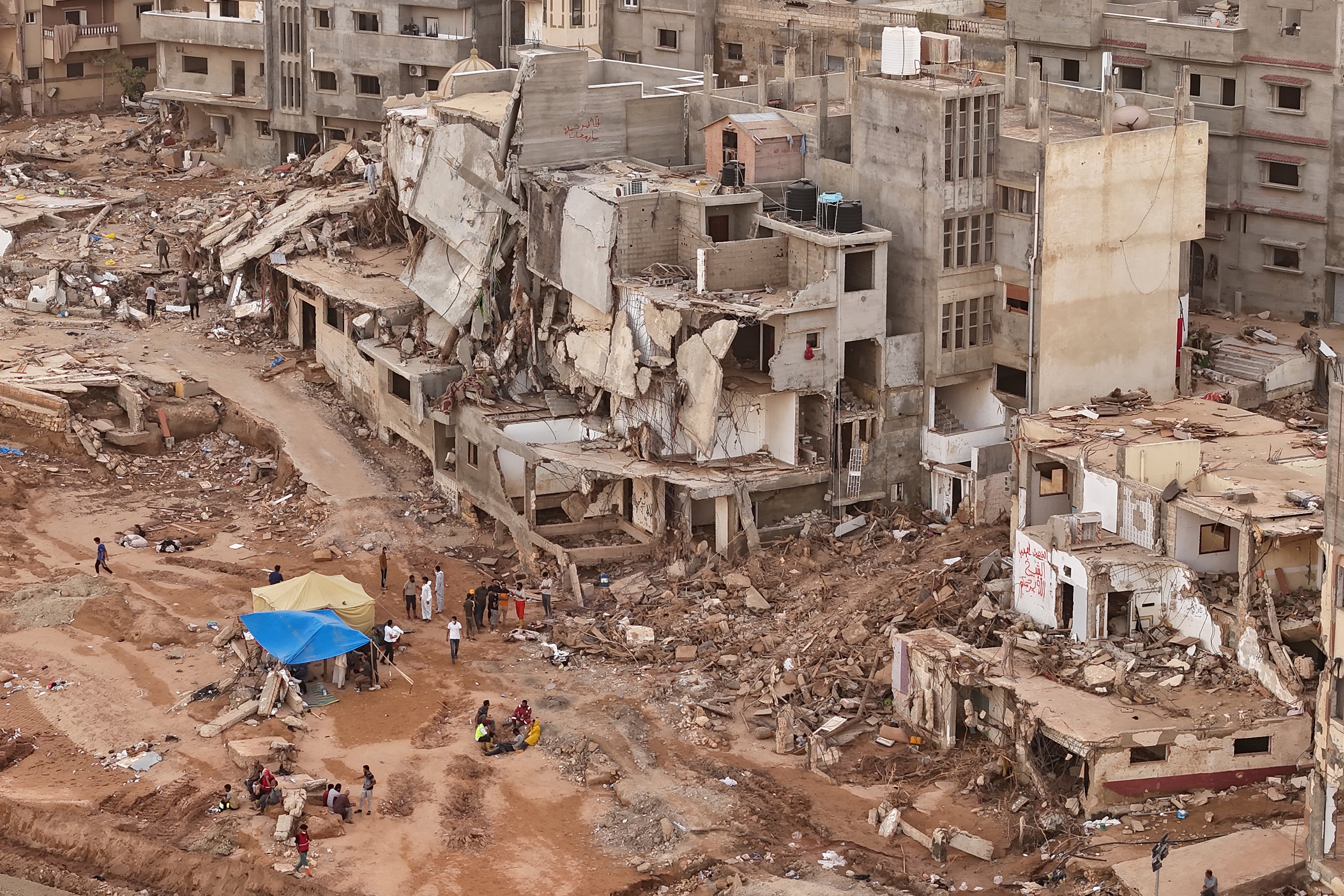Libyan leader says flooded city has been divided to create buffers in case of disease outbreaks
The prime minister of Libyan’s eastern administration says authorities have divided the flood-stricken city of Derna into four sections to create buffers in case of disease outbreaks

Your support helps us to tell the story
From reproductive rights to climate change to Big Tech, The Independent is on the ground when the story is developing. Whether it's investigating the financials of Elon Musk's pro-Trump PAC or producing our latest documentary, 'The A Word', which shines a light on the American women fighting for reproductive rights, we know how important it is to parse out the facts from the messaging.
At such a critical moment in US history, we need reporters on the ground. Your donation allows us to keep sending journalists to speak to both sides of the story.
The Independent is trusted by Americans across the entire political spectrum. And unlike many other quality news outlets, we choose not to lock Americans out of our reporting and analysis with paywalls. We believe quality journalism should be available to everyone, paid for by those who can afford it.
Your support makes all the difference.The prime minister of Libyan's eastern administration said Tuesday that authorities have divided the flood-stricken city of Derna into four sections to create buffers in case of disease outbreaks, a day after thousands of angry protesters demanded the city's rapid reconstruction.
Last week, two dams collapsed during Mediterranean storm Daniel, sending a wall of water gushing through Derna. Government officials and aid agencies have given death tolls ranging from about 4,000 to 11,000.
"Now the affected areas are completely isolated, the armed forces and the government have begun creating a buffer out of fear of the spread of diseases or epidemics," Prime Minister Ossama Hamad said in a telephone interview with Saudi-owned Al-Arabiya TV. No further details were given.
On Monday, the United Nations warned that a disease outbreak could create “a second devastating crisis.”
Libyan protesters gathered in central Derna on Monday in the first mass demonstration since the flood. Outside the city's al-Shabana mosque thousands called for a rapid investigation into the disaster, the urgent reconstruction of the city and other demands.
On Monday evening, the former mayor of the city, Abdel-Moneim al-Gaithi, said his home was set on fire by protesters. Public prosecutors opened an investigation on Saturday into the collapse of the two dams, built in the 1970s, as well as the allocation of maintenance funds for them. That same day al-Gaithi was suspended pending the investigation.
Many of the city's residents see politicians as the architects of the crisis. The country has been divided between rival administrations since 2014. Both are backed by international patrons and armed militias whose influence in the country has ballooned since a NATO-backed Arab Spring uprising toppled autocratic ruler Moammar Gadhafi in 2011.
Both authorities have deployed humanitarian teams to the city but have struggled to respond to the large-scale disaster. The recovery operation, with help from international teams, has been poorly coordinated, and residents say aid distribution has been uneven.
Conflicting death tolls and statistics have been released by various official bodies.
Libya’s Red Crescent has said at least 11,300 people have been killed and an additional 10,000 are missing. After earlier reporting the same death toll, the U.N. Office for the Coordination of Humanitarian Affairs is now citing far lower numbers, about 4,000 people killed and 9,000 missing.
___
Associated Press writer Jack Jeffery in London contributed to this report.